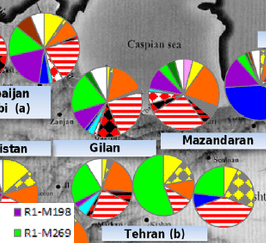There are two options: either Proto-Germanic people lived in the east of Semitic lands in the west of Iran
or there was another Indo-European language with almost the same sound changes of Proto-Germanic in this region from at least the third millennium BC, for example we know Akkadian
ḫabālu, Arabic حبل (ḥabl), Amharic
häbl, Maltese
ħabel, Aramaic: חבלא (ḥaḇlā), Syriac ܚܒܠܐ (ḥaḇlā), Ge'ez ሐብል (ḥabl), Hebrew חֶבֶל (ḥéḇel), Ugaritic
ḥbl, ... (Ugaritic became extinct in the 12th century BC), are loanwords in the Semitic languages with the meaning of "thick rope, cable".
English
cable is from Latin
capulum, from
capiō ("to take, seize"), from proto-IE *
keh₂p "to grab", the proto-Germanic word from this PIE origin is
*habjaną "to lift, heave" (k>x/h & p>f/b), there is also proto-Germanic *
habilaz (*habjaną + *-ilaz "instrumental suffix"), compare
shovel,
bridle, ...





